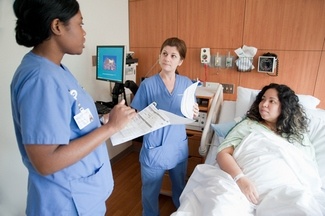Nursing hand-off or shift reports are a critical component of safe patient care in all healthcare settings. Handoff reports must be comprehensive, accurate, and designed to properly communicate essential information from one Nurse to another during shift changes. Keep reading to learn more about the importance of patient handoff reports and how to improve your handoff to reduce patient harm.
Critical Components of a High-Quality Patient Handoff Report
A high-quality patient handoff report must contain certain key elements to ensure that the incoming Nurse understands the patient and their health condition. Some critical components of a high quality patient handoff report include
- Patient demographic information includes the patient's name, age, current diagnosis, and relevant medical and surgical history.
- The patient's current condition should include vital signs, pain levels, and any changes to these values that could affect or change their care.
- The treatment plan includes current medications, treatments, upcoming tests or procedures, and laboratory work.
- Any recent changes should be included to cover treatments, new orders, or any significant events that have affected the patient's hospitalization.
- Safety concerns include allergies, fall risks, and other safety precautions like seizure or aspiration risks.
- Psychosocial information includes the patient's emotional state or disturbances, family involvement, or any social concerns.
- Pending tasks or follow-ups that need to be completed or have not been initiated.
Benefits of A Strong Patient Handoff Report
Increase Patient Safety
An accurate patient handoff report can reduce the likelihood of medication errors, missed treatments, and other critical mistakes that could risk patient safety. When delivering a patient handoff report, information must be shared clearly and effectively to reduce the risk of errors.
All nursing handoff reports should include critical information such as patient allergies, vital signs, recent test results, patient history, and current health status to ensure that all pertinent information is shared. Another layer of protection is to give patient handoff reports in front of the patient and their family so that the patient can contribute any missing information before an error can be made.
Continuity of Care
Making sure patient handoff reports include detailed information for the incoming Nurse allows for a seamless transition into the care of another healthcare provider. When information is not shared appropriately, critical components of the patient's health status become overlooked, and errors can occur.
To ensure information is transferred correctly, many healthcare settings recommend combining written documentation with verbal communication to ensure all key points are communicated clearly and to reduce patient errors.
Promote Effective Communication
Handoff reports happen frequently in healthcare, not only from shift to shift, but also if a patient is transferred to a different floor, department, or facility. Effective communication is essential to ensure all pertinent patient information is shared correctly.
Standardizing patient handoff can significantly improve communication and reduce patient harm. A standardized patient handoff is a structured method for transferring patient information and responsibility. It can dramatically reduce the risk of missed information and allow Nurses to ask questions and gain clarity on any uncertainties. Standardized Nurse handoff reports like the SBAR model (situation, background, assessment, recommendation) can help ensure all information is properly covered.
Enhanced Patient Outcomes
Enhancing patient outcomes is one of the greatest benefits of a comprehensive patient handoff report. With complete and up-to-date information, Nurses can properly anticipate any potential issues and proactively intervene to improve patient outcomes and provide better patient care.
A good patient handoff report also allows Nurses to individualize their patient care based on the most current information provided to them so they can better accommodate each patient's needs and preferences.
As you can see, providing a high-quality patient handoff report is vital to providing safe, effective, and comprehensive patient care. An accurate and easily understood report allows for improved communication and can also help increase patient safety and improve patient outcomes.


 The Joint Commission
The Joint Commission 